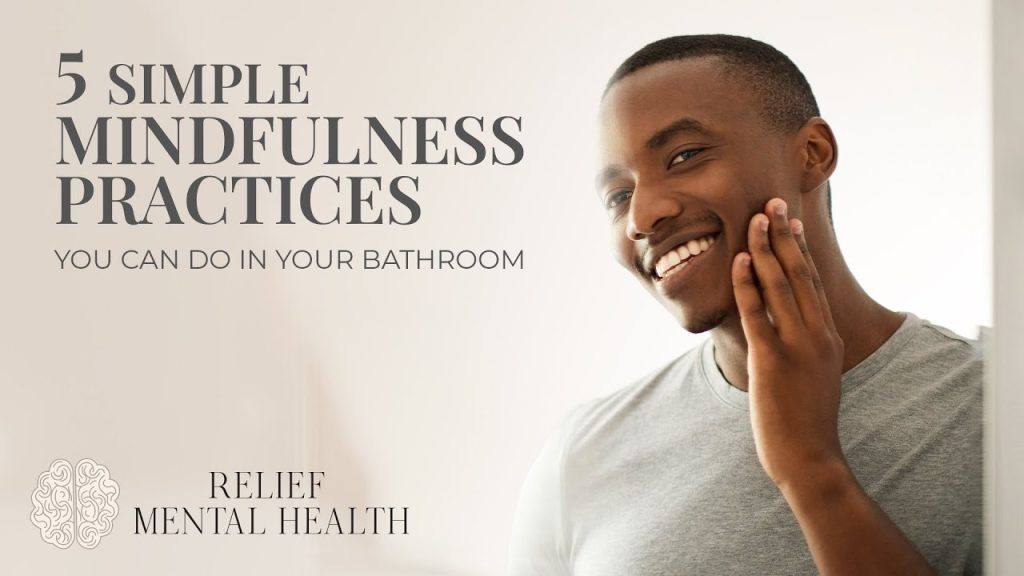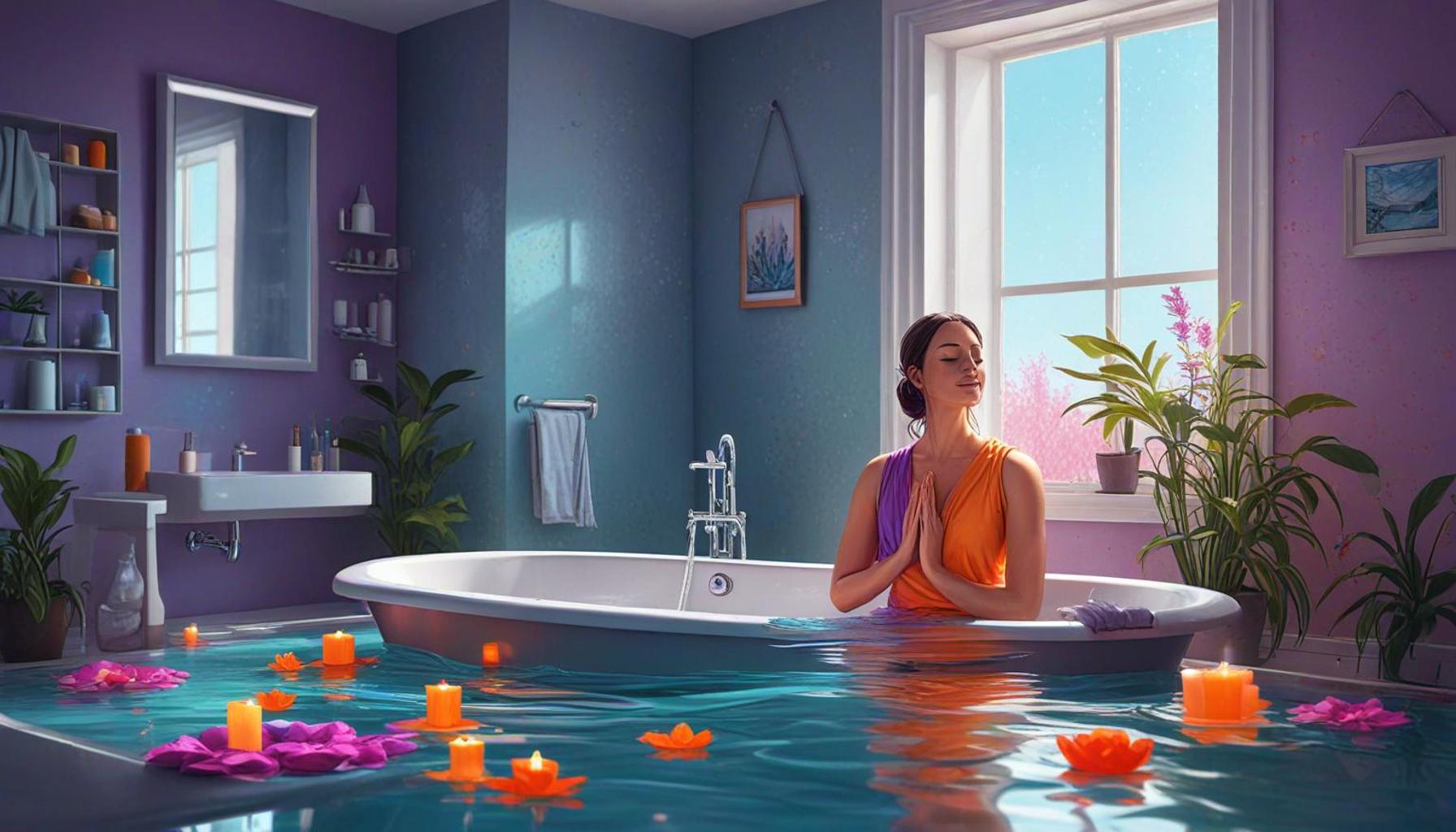Transform Your Shower into a Meditation Space Breath Techniques for Anxiety Relief

Finding Calm in the Shower
Every day, millions of people feel the overwhelming weight of anxiety. In the quest for relief, many are turning to unconventional methods, merging daily routines with mindfulness practices. Shower meditation is one such practice, transforming a simple shower into a sanctuary of peace.
The Power of Water and Breath
The sound of water combined with focused breathing can create a uniquely calming experience. By harnessing breath techniques in the shower, individuals can find clarity, creativity, and serenity amidst their busy lives. This practice not only promotes relaxation but also encourages a deeper connection to the present moment.
What to Expect
In this article, we will explore essential techniques that can transform your shower into a true meditative space. Prepare to discover:
- Five effective breathing techniques specifically designed for anxiety relief.
- Tips on incorporating mindfulness into your daily shower routine.
- The benefits of practicing shower meditation regularly.
Join us as we delve deeper into this innovative approach to mindfulness and learn how small changes can lead to profound improvements in mental health.
YOU MAY ALSO LIKE: Read this other article

Transforming Your Shower into a Meditation Space: Breathing Techniques to Relieve Anxiety
For many, the shower is just another step in the daily routine, a hurried necessity squeezed between the obligations of life. But what if you could transform this brief interlude into a sanctuary of serenity? What if, under the cascade of warm, streaming water, you could find a respite for your mind and a shield against anxiety? This article will explore how, with mindful practice and dedicated techniques, your shower can become more than a space for hygiene—it can transform into a sanctuary for meditation and anxiety relief.
We’ll detail five essential breathing techniques that, when practiced regularly, can reshape how you perceive this daily ritual. By incorporating these exercises into your shower time, not only can anxiety diminish, but you can nurture a mindset of calm and mindfulness. Dive in with us as we explore this transformative possibility.
5. The Basic Deep Breathing Technique
The foundation of any meditation practice is proper breathing. The deep breathing technique focuses on slow, deliberate inhalation and exhalation, helping you center yourself amidst the daily chaos. Standing beneath the shower’s warm embrace, you are isolated from distractions—perfect for practicing this exercise.
- Inhale through your nose: Count to four as you breathe deeply, allowing your abdomen—and not just your chest—to expand fully. This breath should be deep and complete, drawing as much air as possible into your lungs.
- Hold for a moment: Retain this breath briefly, instilling a sense of calm and control, as if harnessing your energy.
- Exhale slowly: Extend your exhale to a count of six, focusing on the sensation of the air leaving your body, along with tensions and worries.
This technique is more than simple breathing—it’s about shifting your focus from external stressors to internal calmness. Daily practice of deep breathing in the shower can be a powerful tool in reducing anxiety and fostering a tranquil mindset, establishing your bathroom as a personal wellness haven.
4. The 4-7-8 Breathing Technique
Developed by Dr. Andrew Weil, the 4-7-8 breathing technique serves as both an easy-to-remember pattern and a potent anxiety reliever. Utilizing this method in the shower amplifies its effectiveness, thanks to the soothing backdrop of running water.
- Inhale for four seconds: Draw in a deep breath through your nose, consistently, as water envelops the outside world.
- Hold your breath for seven seconds: This pause is where magic happens—allow this breath to penetrate your bloodstream, saturating your body with oxygen.
- Exhale for eight seconds: Release it all in a controlled whoosh, letting the water act as a vehicle taking your anxieties away.
The rhythmic cadence of 4-7-8 breathing acts as a tether for a wandering mind, a form of measured control that tempers racing thoughts. The sensation of warm water combined with the practice creates an encapsulated sense of peace—a true moment of sanctuary in an otherwise hectic day.
3. The Visualization Breathing Technique
Taking breathwork a step further, the visualization breathing technique pairs each inhalation and exhalation with mental imagery, creating a profound path to inner peace. Within the comforting ambience of your shower, this method allows your imagination to roam while your body remains grounded in reality.
- Close your eyes and inhale deeply: Visualize the air travelling through your body, refreshing and energizing each cell.
- As you exhale: Picture steam and mist arising from the water, whisking away tension with it.
- Picture a place of tranquility: Envision a serene setting—a secluded beach, a quiet forest—or any haven that evokes pure joy and peace.
This synergy of breath and visuals enhances relaxation, anchoring you in a state of tranquility. With practice, you may find this mental retreat to not only alleviate anxiety but also enhance creativity and joy.
2. The Mantra Breathing Technique
The mantra breathing technique builds upon ancient meditation practices by integrating sound and repetition to cleanse the mind. With the shower’s natural acoustics, this technique becomes even more potent.
- Choose a calming word or phrase: Simple affirmations such as “peace” or “let go” are powerful in their simplicity.
- Inhale while silently repeating the mantra: Integrate your chosen mantra with each breath, mentally reinforcing its meaning.
- Exhale while releasing tension: Let your mantra flow with your exhale, its repetition grounding your thoughts.
Using your voice—whether aloud or silent—helps to drown out distractions and dissolve intrusive thoughts. The harmony of water and your mantra creates a lullaby of calm, a deep-seated release within the temporal safety of your shower.
1. The Mindful Shower Technique
Finally, the mindful shower technique is not just an exercise but a lifestyle—a holistic approach to mindfulness, allowing each aspect of your shower to contribute to your overall sense of well-being.
- Engage your senses: Immerse fully into the experience by noticing the scent of soap, the rise of steam, and the soft pitter-patter of droplets. Make your shower a symphony of sensations.
- Practice gratitude: With each breath, consider what you appreciate in life, allowing thankfulness to wash over you like the spray above.
- Conclude with a positive affirmation: Ground your mind before leaving your shower sanctuary, reaffirming your inner strength and resilience, setting a positive tone for the day.
This holistic practice not only soothes anxiety but also transforms ten minutes of your day into a profound act of self-care. By making your shower a refuge, it becomes a daily reset button—a moment to appreciate life, recharge your spirit, and emerge renewed.
In conclusion, transforming your shower into a meditation space through focused breathing practices redefines both your routine and your mental landscape. Over time, these techniques can build resilience against anxiety, fostering a continuous cycle of calm and centering each time you step under the water. Embrace this time for yourself, and allow the healing power of your shower to cleanse not just your body, but your mind and spirit as well.
In our fast-paced lives, it’s essential to carve out pockets of peace, and turning your shower into a meditation space can serve as a sanctuary for your mind and body. The warm water cascading over you can promote a sense of calm, while incorporating specific breathing techniques can enhance this experience. Below is a table that highlights various categories related to this theme and their advantages.
| Category | Details |
|---|---|
| Mindfulness | Employing mindfulness during your shower allows you to focus entirely on the present moment, promoting relaxation and reducing stress levels. |
| Breathing Techniques | Practicing various breathing techniques such as deep diaphragmatic breathing can help regulate your body’s response to stress and improve overall mental clarity. |
| Sensory Engagement | Engaging your senses in the shower environment (the feeling of water, the scent of soap) enhances the meditative experience, grounding you and helping to alleviate anxiety. |
| Routine and Ritual | Transforming your shower into a personal ritual encourages consistency, making your practice a repetitive source of emotional balance. |
As you explore the nuances of using your shower as a meditation tool, consider implementing these categories into your routine. Each aspect contributes to a holistic approach in managing anxiety through the simple act of showering. By consciously integrating mindfulness, employing breathing techniques, enhancing sensory experiences, and establishing a consistent ritual, you can transform a mundane task into a profound, anxiety-relieving practice.
LEARN MORE: This related article may interest you
Frequently Asked Questions: Transforming Your Shower into a Meditation Space
What are the benefits of meditating in the shower?
Meditating in the shower offers a blend of physical and mental benefits. The sound of water and its rhythmic flow can enhance relaxation, helping to put the mind in a state of calm. The act of showering itself can be a form of cleansing, both literally and metaphorically, symbolizing the washing away of stress and tension. Additionally, the warm water can relax muscles, which, in turn, may lead to a deeper meditative state. Importantly, combining meditation with breathing techniques in the shower can significantly improve one’s ability to manage anxiety symptoms.
How can breathing techniques be effectively used in the shower to relieve anxiety?
Incorporating breathing techniques in the shower can amplify the meditative experience. Begin by focusing on deep and slow breaths, inhaling through the nose and exhaling through the mouth. The goal is to align each breath with the soothing sound and feel of water, creating a harmonious synchronization between breath and environment. Techniques like diaphragmatic breathing, where the focus is on abdominal movement, can help enhance oxygen flow, promoting relaxation. Practicing these techniques regularly can help reduce anxiety levels over time.
Is it necessary to have prior meditation experience to practice in the shower?
No prior meditation experience is required to enjoy the relaxation and mental clarity that shower meditation can provide. This setting is beginner-friendly as it naturally provides sensory elements that foster mindfulness. By simply directing attention to the sensation of water and the process of deep breathing, even beginners can find a peaceful meditative state. The key is to remain open and patient with the process, gradually building up the practice with time.
What are some challenges one might face when meditating in the shower?
Skepticism about the effectiveness of meditation in such a routine setting could be a potential barrier. Additionally, maintaining focus while showering can be challenging due to the need to perform other hygiene tasks. It is essential to set an intention for meditation before stepping into the shower and to create a dedicated few minutes to focus solely on breathing and mindfulness. Distractions might occur, but practicing patience and gently returning focus to the breath can help overcome these hurdles.
Can personalizing the shower environment enhance the meditation experience?
Indeed, personalizing the shower environment can significantly improve meditation quality. Consider dimming the lights or using candles to create a calming atmosphere. Aromatic elements such as essential oils or scented soaps can also stimulate the senses, enhancing the experience. The addition of meditative music or sounds of nature through waterproof speakers might further aid concentration. Personal touches allow for a more immersive and customized meditation session.
YOU MAY ALSO LIKE: Read this other article
Conclusion
Transforming the shower into a sanctuary for meditation represents an innovative approach to managing anxiety. By integrating breathing techniques into this daily ritual, individuals can cultivate a profound sense of calm and mindfulness. This practice not only enhances one’s mental health but also enriches the overall shower experience, turning it into a therapeutic time-out from the stressors of life.
Throughout this article, we explored the top five techniques that can transform a simple shower into a meditation haven. From the foundational deep breathing to the insightful 4-7-8 method, each technique offers unique benefits in relieving anxiety. The article also delved into essential practices such as visualization and echo breathing, which engage the mind in ways that heighten relaxation. Ultimately, incorporating these techniques helps create a personalized meditation experience that suits individual needs.
By employing these strategies, anyone can leverage the shower space as a refuge for both body and mind. This concept encourages a more mindful approach to mundane tasks, facilitating a daily pause required to recharge and reflect. The significance of such practices in our fast-paced world cannot be overstated. As we continue to seek balance in our lives, turning to innovative, accessible practices like shower meditation can pave the way for sustained mental well-being.
Engaging with these techniques invites a renewed perspective on self-care, pushing the boundaries of traditional meditation. This exploration not only shines a light on the importance of mindful breathing but also opens the door to further investigation into integrating meditation into daily routines. For those seeking to alleviate anxiety, transforming a routine shower into a moment of tranquility offers a promising avenue worth exploring.



